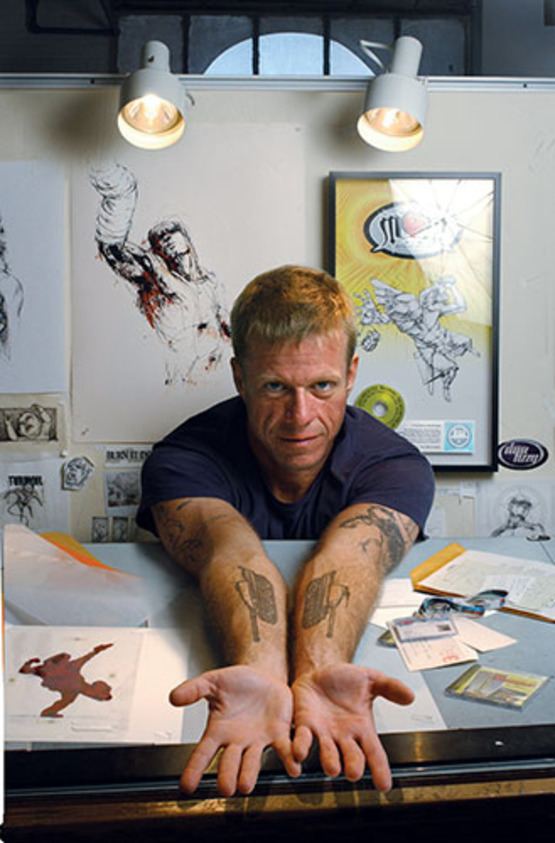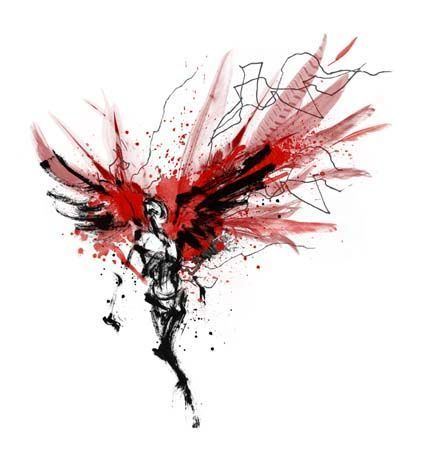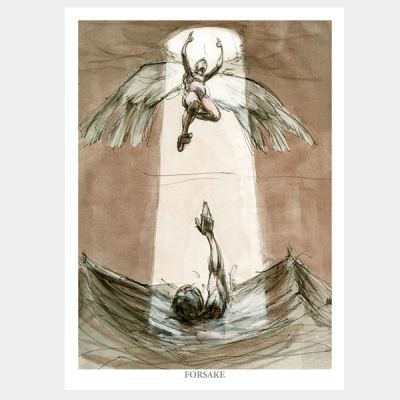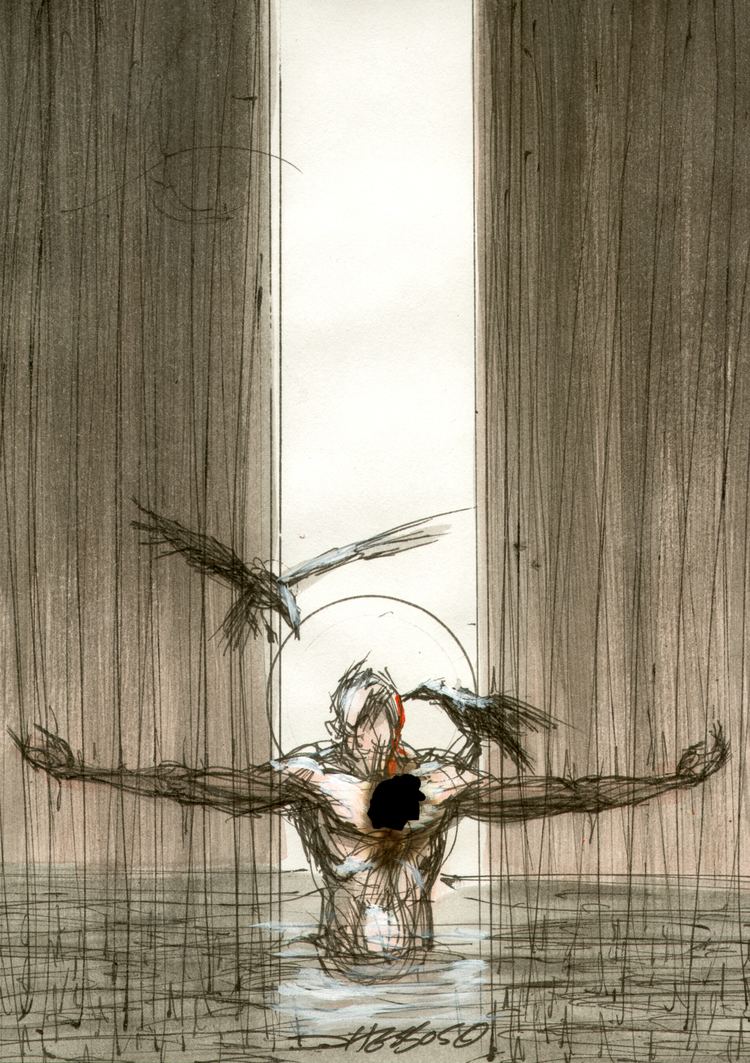Name Derek Hess | Role Artist | |
 | ||
People also search for Nick Cavalier, Martin Geramita, Matthew Santos | ||
Derek hess black line white lie
Derek Hess is an American artist based in Cleveland, Ohio. His creative career grew largely out of his ability to express the emotion in the indie, hardcore and metal scenes of the mid-1990s. From concert posters to politically charged fine art pieces, Cleveland-based artist Derek Hess has tested the waters of both the music and art world for over 15 years. Hess began creating promotional flyers for shows in Cleveland using his own unique vision and a playing off the bands names and genre. These flyers soon garnered the attention of countless bands as well as both the Rock and Roll Hall of Fame and the Louvre in Paris, who both have Hess’ art in their permanent collections.
Contents
- Derek hess black line white lie
- Derek hess howl gallery tattoo
- Chapter 1 Foundation
- Chapter 2 Anatomy Technique
- Chapter 3 The Euclid Tavern
- Chapter 4 Fine Art
- Chapter 5 Strhess Music Festivals Strhess Clothing
- Chapter 6 The Dark Years
- Legacy
- References

In addition to posters for bands such as Deftones, Thursday, Clutch and Pearl Jam, Hess has created CD covers for bands like Motion City Soundtrack, Converge and Unearth. He has also been featured on television show and in magazines – TLC, The Food Network, MTV, Fuse, VH1, Alternative Press and Juxtapoz as well as many others.

Derek hess howl gallery tattoo
Chapter 1: Foundation

Derek Hess was influenced by his father, a World War II veteran and Industrial Design professor at the Cleveland Institute of Art. Hess stated on his website that he remembers asking his father to draw the war scenes that he experienced. From a young age, Hess was transfixed by his father Roy’s ability to create images of planes and tanks he saw in his mind’s eye on the paper.

Alongside his father’s artistic ability, Hess also inherited his desire to make a living from art. Beginning his career as a student at the ClA, Hess later transferred to The College for Creative Studies in Detroit to focus on graphic design and illustration before settling in on a major in fine art and printmaking. He finished his degree at CIA in their critically acclaimed printmaking program.
Hess says one of his biggest artistic influences is Gil Kane’s “forced perspective” technique that his father introduced him to. Forced Perspective is an art technique that creates an optical illusion making an object appear farther away, closer, larger or smaller than it actually is by making it larger than the rest of the image. This artistic technique was so influential to his style it became the title of his documentary, Forced Perspective (Film) which was released in 2016.
Another of Gil Kane's techniques called “window boxing” has also been very influential in Hess’ art. Window boxing is a technique where a figure appears to break out of the frame to make it appear larger than life. This technique can be seen in many of Hess’ early Euclid Tavern concert posters.
Chapter 2: Anatomy & Technique
Hess' technical understanding of human anatomy and fine art education has set him apart from other artists of his time. Hess had several instructors, including his father who were vets of WWII. These early drawing instructors instilled a tough work ethic in Hess. Learning anatomy as a fundamental of art began falling out of fashion with the invention of the camera. When artists no longer had to draw recreations of realistic life, they were free to explore different types of drawing and expression.
Hess had an intuitive ability to draw and understand the human body but says that he needed instruction and direction, “I intuitively knew how to look and I understood to draw, it came naturally, but that was a problem in my early days. I ‘knew better’ than everyone else—and I was an out of control drunk maniac kid. I was a lot of trouble—but I would go to class and I’d look at other kids’ drawings and think ‘Yeah, I got you all beat, I’ll see you in five weeks!’” He says in his documentary. (see: Figure Drawing)
Although the ability to draw has always come easy, the process takes practice, “For years and years, I would just flip pages in sketchbooks and draw, draw, draw until something came out. That’s a good way to approach it, I think.” Talking about his artistic process, he explains that is doesn’t always come out the way he wants or expects it to the first time, “Once I let go of the struggle and start sketching, it starts to come out. It’ll never be completely pure, there are always filters that go through you. If you’re tuned in, you can feel if it’s flowing. There’s something that we all tune in to, and we can be connected to it. It’s a choice.”
Chapter 3: The Euclid Tavern
After returning to Cleveland, Hess got a job at a bar he frequented while living in Cleveland, The Euclid Tavern. Described by Hess as a “workingman’s shot-and-a-beer-bar”, the Euclid Tavern was known as being a hub for local and underground music. Here, Hess chopped chicken wings and took charge of booking bands. He soon began to curtail the kinds of the bands being brought to the tavern into something he liked and was comfortable with. He also started creating the promotional flyers and posters for the shows using his own unique vision and a play off the bands names and genre. These flyers were the very beginning of Derek’s career as an artist.
The first time Hess's work was recognized in collaboration with a musician was with the alternative metal band Helmet. The flyers and posters Hess created were the first in a series that were posted all over the area. The posters interested local art dealer William Busta, who then showed the flyers in his gallery.When Hess began using color graphics in his posters he received much more recognition and was featured in Newsweek magazine, in an article on new poster artists of 1994.
Chapter 4: Fine Art
Because of Hess' success as a poster artist, he had a built in fan base when he wanted to make the jump back into fine art. Hess has been able to cultivate a large and expansive fan-base because of his wide appeal across genres. There are people who love his art because of its ties to music. Meanwhile, there are people who have never heard of the bands he has done work for that appreciate his fine art.
Hess’ aptitude to convey his work through this showcase of fundamentals has helped elevate him from a poster artist to a skilled fine-artist utilizing pen and ink, acrylic paint and silkscreen prints with hand made separations.
“I actually do very little poster art anymore, if any,” Hess said. “I’ve been able to develop and mature as an artist and I’m lucky that people have been very accepting of the progression.”
Hess’ art has been able to transcend genres as well as generations, which is icing on the cake for the artist. “At the end of the day I’d like, ideally, for all of my art to be technically sound and that hopefully connects with people. That, to me, is what makes successful art.”
Chapter 5: Strhess Music Festivals & Strhess Clothing
Hess’ music festivals, Strhess Fests and Strhess Tours, both in the United States and abroad made a huge impact in the hard core and metal scenes in the early 2000s. These shows were a collaboration of music and art that features bands such as Thursday, Shadow’s Fall, Stretch Arm Strong and Taking Back Sunday.
The first Strhess Fest was in 2003 in Austin, Texas during South by Southwest to a capacity crowd featuring Candiria, Every Time I Die, Nora and Atreyu. The following festivals were renamed, Strhess Tour which ran from 2003 to 2007. The first was held in held in Cleveland, Ohio at the Scene Pavilion in the West bank of the Flats. Following the success of these shows, Strhess Tour traveled the U.S. and did a brief tour through Europe. The festivals featured both local and national bands, all of which were hand picked by Hess himself, mostly hardcore and metal bands.
Hess now owns his own Indiemerch clothing line, Strhess. His shirt designs can be seen worn by many famous musicians from the genres rock to indie. Shaun Morgan of Seether is photographed wearing a Strhess shirt in the liner notes of One Cold Night, a live acoustic album. The Strhess Brand came about as Hess began making his move from poster art to fine art. The name came from the Strhess Tours and Festivals that fans were already familiar with. Because of this, Hess was able to bridge the gap between his music roots and newer ventures into fine arts. While many of his fans were not familiar or could not afford fine art prints or originals, they did appreciate well designed shirts and merchandise from their favorite artist.
Chapter 6: The Dark Years
Throughout his entire career, Hess struggled with alcoholism. He later realized his alcohol abuse was a way for him to self medicate and cope with bipolar disorder.
He first went to rehab at 18, “The law said go to County Jail or go to rehab, so I said 'Let’s go to rehab!’” Hess says. It was here that Hess learned about his mental illness and how it had been affecting his life without his knowing. After rehab, Hess was sober for 16 years, later falling off the wagon after a bad break up.
His battle with alcoholism began to affect his art, “The work I was making when I was drunk or hungover wasn’t as good as it could be. I would think I was doing a masterpiece, until I looked at it the next day,” says Hess.
Hess eventually checked himself into rehab again, “I got there, it was noon, and they asked me if I’d been drinking. ‘HELL YEAH, I’ve been drinking!’ Because I’d get sick if I didn’t drink,” he says. Since, Hess has remained sober and has found more effective ways to manage his bipolar disorder.
In his documentary, Forced Perspective, Hess speaks candidly about his battle with alcoholism and mental illness and has worked with several Mental Health Organizations while promoting the film.
Legacy
Today, Derek is still creating art and frequently has art shows at his gallery in Cleveland, Ohio, The Derek Hess Gallery, located at 78th Street Studios in the Gordon Square Arts District. Hess is currently doing talks and screenings across the country to promote his new documentary, Forced Perspective. Forced Perspective is an in depth look at the artist’s life and art and was released in 2016 and is now available for sale through Vimeo. Derek also frequently updates his personal blog at Derekhessblog.com.
Hess' T-shirt and merchandise store is still active and is updated frequently with new art prints and products featuring the artist's work. Hess has also released several books including: Black, White & Red All Over, He Ain’t No Vargas, Black Line White Lie, and Please God, Save Us.
